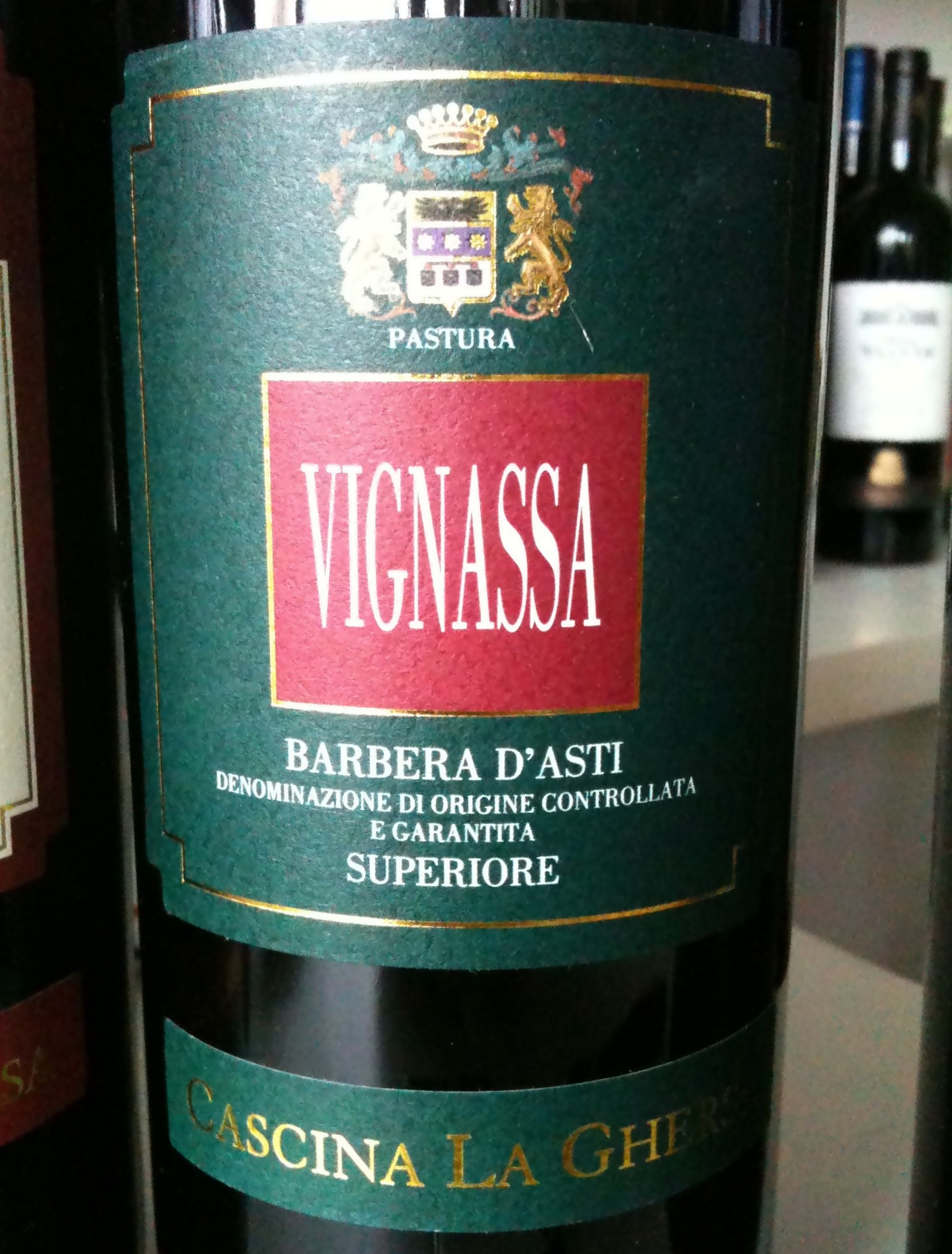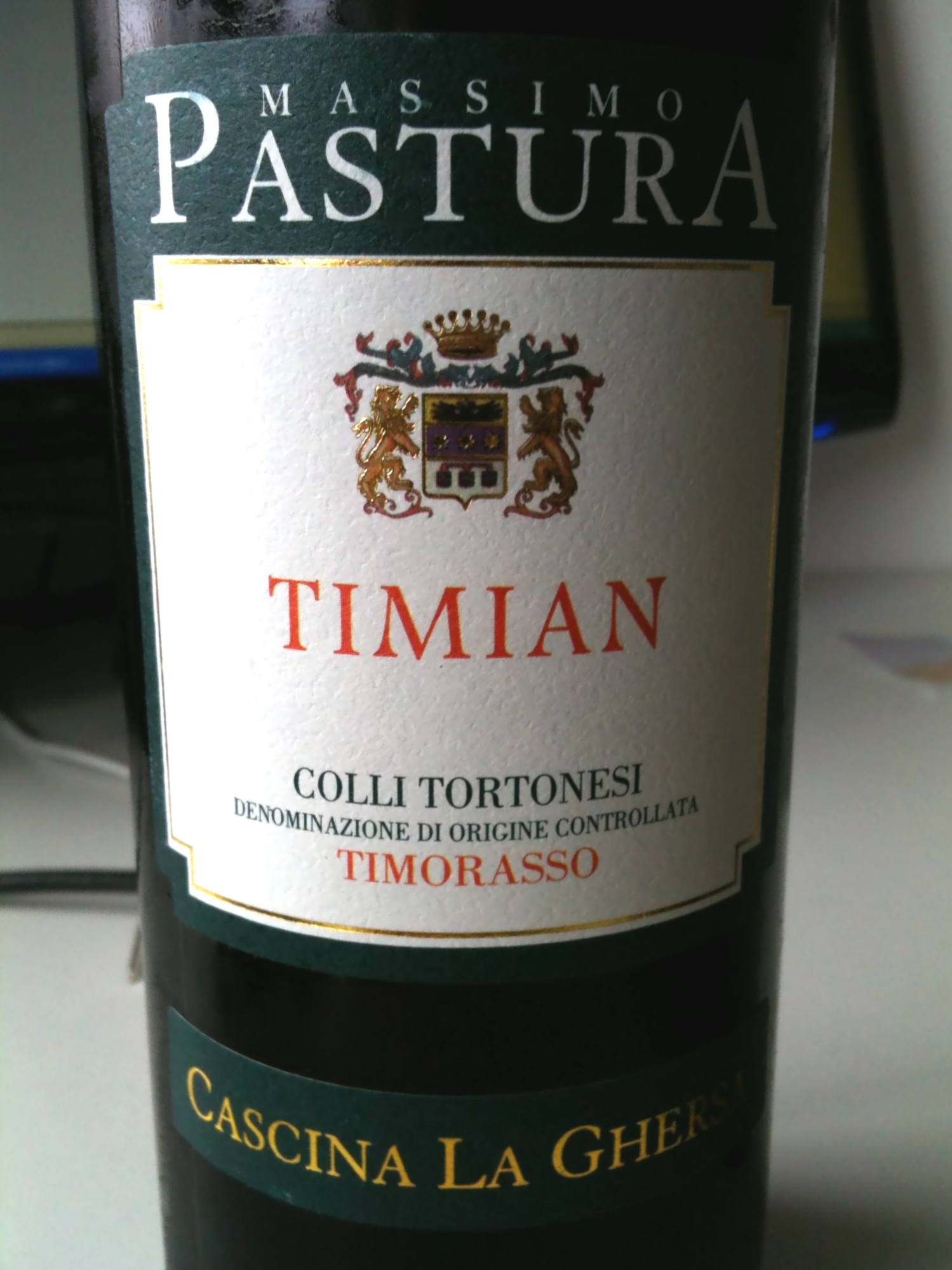The wines of La Ghersa
Posted on 7 January 2012
Do you ever drink Barbera? That quintessential Italian lunch wine, vinous, vivacious and refreshing, that a decade ago made up a large chunk of Italian wine lists and house wines? I don’t. That’s because over that decade, Barbera has been completely vulgarised to become its own caricature.
It’s especially Barbera’s traditional stronghold, the Asti district, that in a crazy attempt to modernise and internationalise itself, has completely imploded. The pursuit of high journalistic scores by applying ever more new oak and dry tannins has resulted in a deluge of undrinkable wine, even though they it is now called ‘Superiore’.

85-year-old Barbera vine. © La Ghersa @Facebook.
Nothing could illustrate the hate affair of modern Barbera better than the unprecedented blogosphere outrage at the 2010 Barbera meeting. (See notably these juicy entries on Do Bianchi, Saignée, Charles Scicolone, Vinagenturet, Worcester Sauce, and Vino Wire). I wasn’t surprised at that scandal. The Barbera producers, like so many in Italy, have lost touch with reality and it is a painful process to reawaken to the fact the world does not actually desire another superoaky über-Barbera.
With Tuscan Merlot and Sicilian Chardonnay, Barbera d’Asti is probably the last wine I’d buy to drink, but there are a few I like. And none more than the wines of Massimo Pastura of the La Ghersa estate. Even in the darkest days of Parkerized Barbera, Massimo was making some of the more palatable food-friendly, inexcessive wines, including the Vignassa, an old-vine example that has long been a favourite of mine in fine dining situations. Massimo now sent me a full case of new releases to try, and these wines are better than ever.

The Pastura family of La Ghersa. © La Ghersa @Facebook.
I tasted four Barberas. The basic unoaked 2010 Piage’ is clean, fruity, even somewhat brash (in a good sense) with that invigorating acid streak that makes Barbera such a jewel with food (few grape varieties are better e.g. with tomatoes). The 2008 Camparó is adding a dimension of concentration and sap without pumping up the oak; it stays admirably fruity, focused and modern. The 2009 Muaschae is Massimo’s new project from young replanted clonal vineyards, showing very young today with oak showing, lacking the Camparó’s focus but the purity of fruit is promising. Finally the 2008 Vignassa, a truly fine bottle, rich, mouthfilling, with softer acids than the other versions, but digesting its oak well and evolving well in the glass, a wine of class and potential. Massimo also threw in a bottle of the 1998 Vignassa, still in excellent shape (1998 is growing to be one of my favourite vintages in Piedmont), balsamic, complex, a touch animal, chunkier than a Barolo of the same age would be, but otherwise similar in class. It can still keep.
There were some other good surprises in that La Ghersa mixed case. A special mention goes to the 2010 Monferrato Chiaretto, a claret (stronger than a rosé) from Barbera that might be the best wine of that type I tasted since my stay at the Garda lake. I also liked the 2009 Grignolino d’Asti Spineira (see my previous take on this grape), typical with a nose of red berries, allspice and ashes but a little more tannic and structured than usual. The 2010 Gavi Il Poggio was deliciously simple in its peary fruitiness. Then Massimo’s hottest project of the moment, two wines from the Timorasso grape (see this article for background): the simple (perhaps exceedingly so) 2010 Sivoy and 2009 Timian, fuller, structured, almost smokey, with good minerality and dimension, although in a way it’s taming the Timorasso beast, making a more universally appealing wine out of this quirky grape.
The La Ghersa wines on this showing seemed fruitier and more approachable than I remembered from past vintages, with excellent focus and a limpid, vivid fruitiness. I think Massimo Pastura has been listening to the common folk (he’s one of the more social media-engaged winemakers in Piedmont), and his wines reflect that change of approach that everybody’s been talking about (except the majority of Asti producers): less oak, less extract, more natural fruit flavours, more drinkability. All that without sacrificing varietal and terroir typicity. So there’s hope for Asti?
Disclosure
Source of wine: twelve tasting samples kindly provided by the producer.



